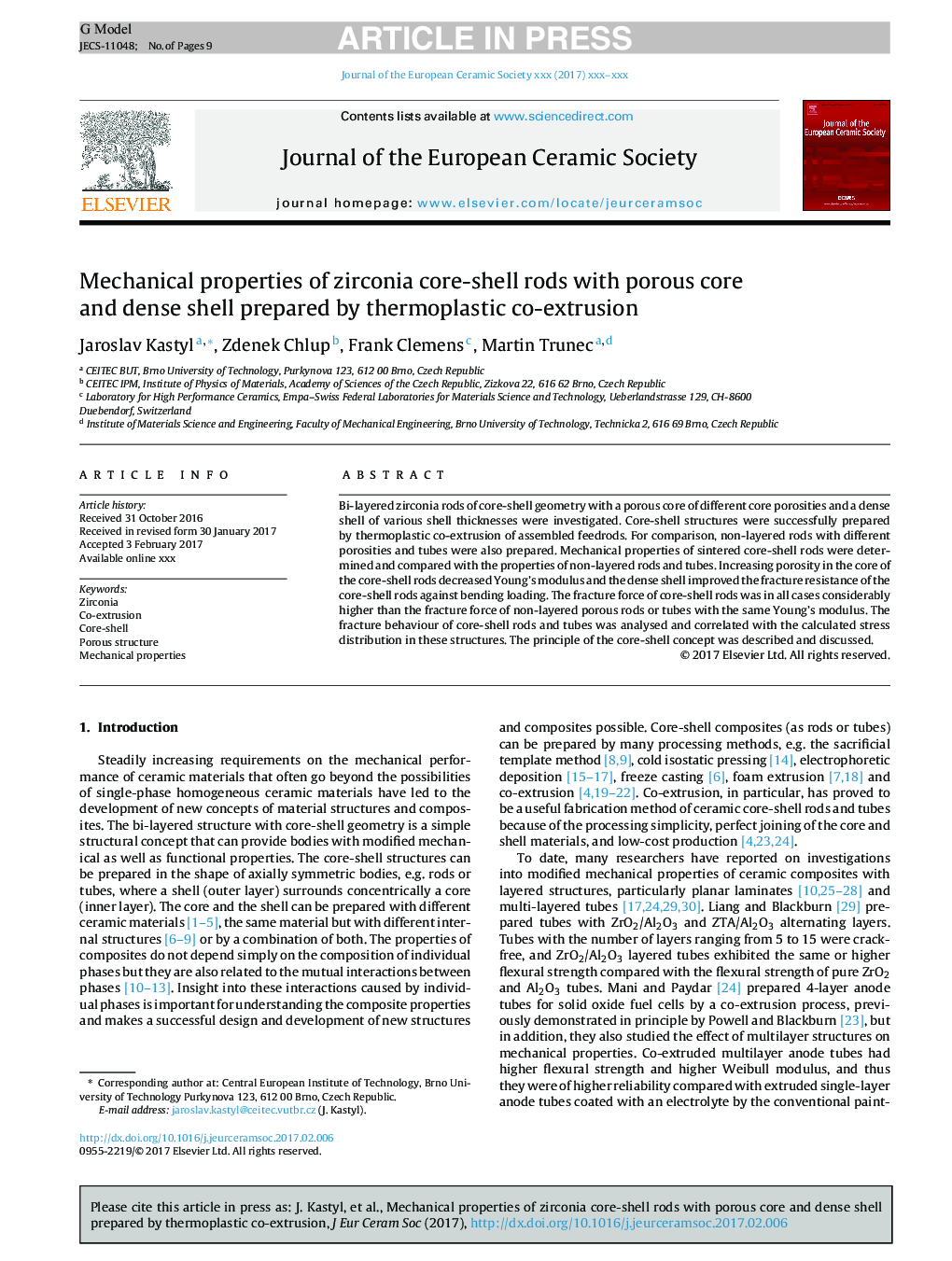| Article ID | Journal | Published Year | Pages | File Type |
|---|---|---|---|---|
| 5440907 | Journal of the European Ceramic Society | 2017 | 9 Pages |
Abstract
Bi-layered zirconia rods of core-shell geometry with a porous core of different core porosities and a dense shell of various shell thicknesses were investigated. Core-shell structures were successfully prepared by thermoplastic co-extrusion of assembled feedrods. For comparison, non-layered rods with different porosities and tubes were also prepared. Mechanical properties of sintered core-shell rods were determined and compared with the properties of non-layered rods and tubes. Increasing porosity in the core of the core-shell rods decreased Young's modulus and the dense shell improved the fracture resistance of the core-shell rods against bending loading. The fracture force of core-shell rods was in all cases considerably higher than the fracture force of non-layered porous rods or tubes with the same Young's modulus. The fracture behaviour of core-shell rods and tubes was analysed and correlated with the calculated stress distribution in these structures. The principle of the core-shell concept was described and discussed.
Related Topics
Physical Sciences and Engineering
Materials Science
Ceramics and Composites
Authors
Jaroslav Kastyl, Zdenek Chlup, Frank Clemens, Martin Trunec,
